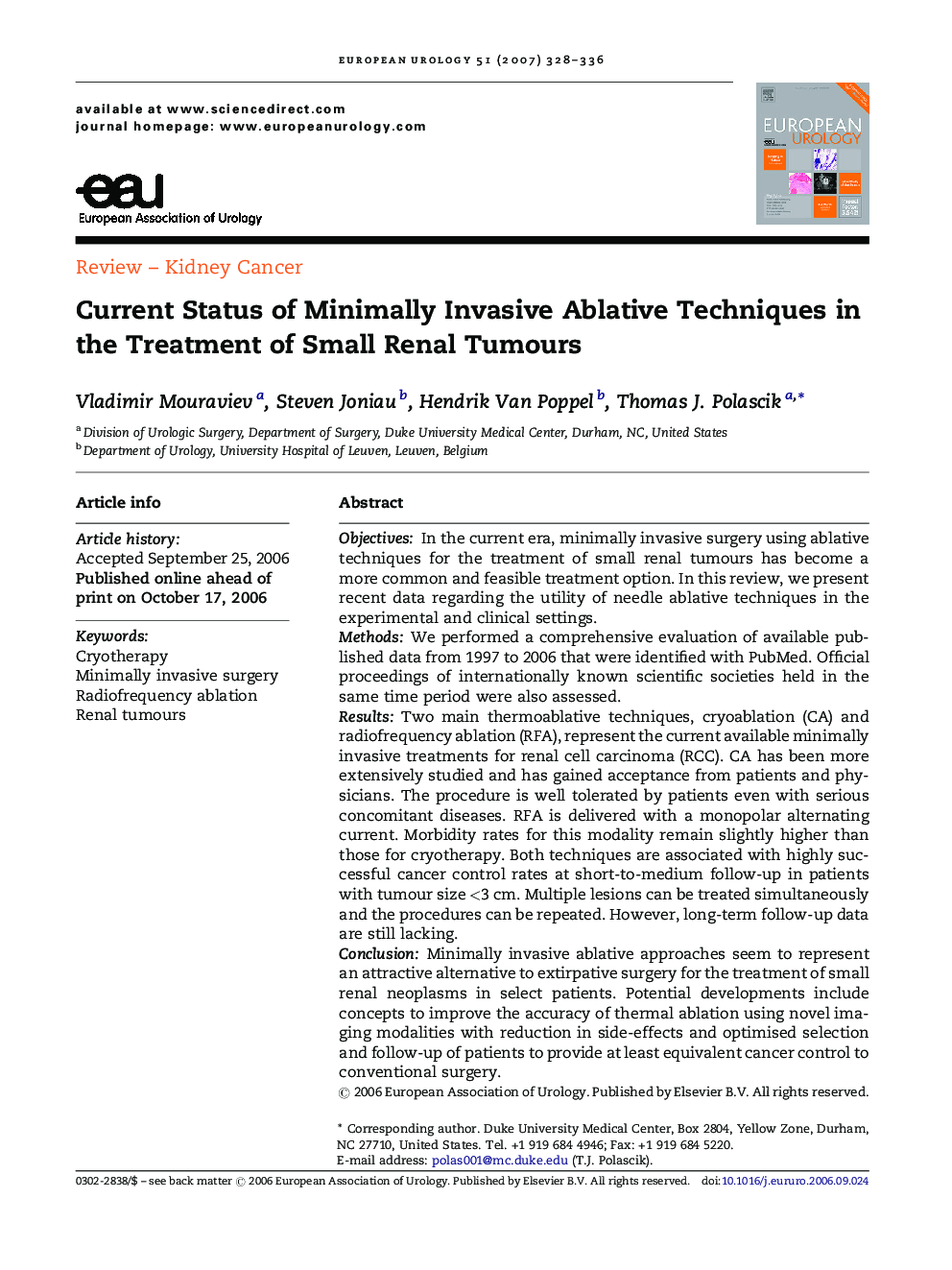| Article ID | Journal | Published Year | Pages | File Type |
|---|---|---|---|---|
| 3928898 | European Urology | 2007 | 9 Pages |
ObjectivesIn the current era, minimally invasive surgery using ablative techniques for the treatment of small renal tumours has become a more common and feasible treatment option. In this review, we present recent data regarding the utility of needle ablative techniques in the experimental and clinical settings.MethodsWe performed a comprehensive evaluation of available published data from 1997 to 2006 that were identified with PubMed. Official proceedings of internationally known scientific societies held in the same time period were also assessed.ResultsTwo main thermoablative techniques, cryoablation (CA) and radiofrequency ablation (RFA), represent the current available minimally invasive treatments for renal cell carcinoma (RCC). CA has been more extensively studied and has gained acceptance from patients and physicians. The procedure is well tolerated by patients even with serious concomitant diseases. RFA is delivered with a monopolar alternating current. Morbidity rates for this modality remain slightly higher than those for cryotherapy. Both techniques are associated with highly successful cancer control rates at short-to-medium follow-up in patients with tumour size <3 cm. Multiple lesions can be treated simultaneously and the procedures can be repeated. However, long-term follow-up data are still lacking.ConclusionMinimally invasive ablative approaches seem to represent an attractive alternative to extirpative surgery for the treatment of small renal neoplasms in select patients. Potential developments include concepts to improve the accuracy of thermal ablation using novel imaging modalities with reduction in side-effects and optimised selection and follow-up of patients to provide at least equivalent cancer control to conventional surgery.
